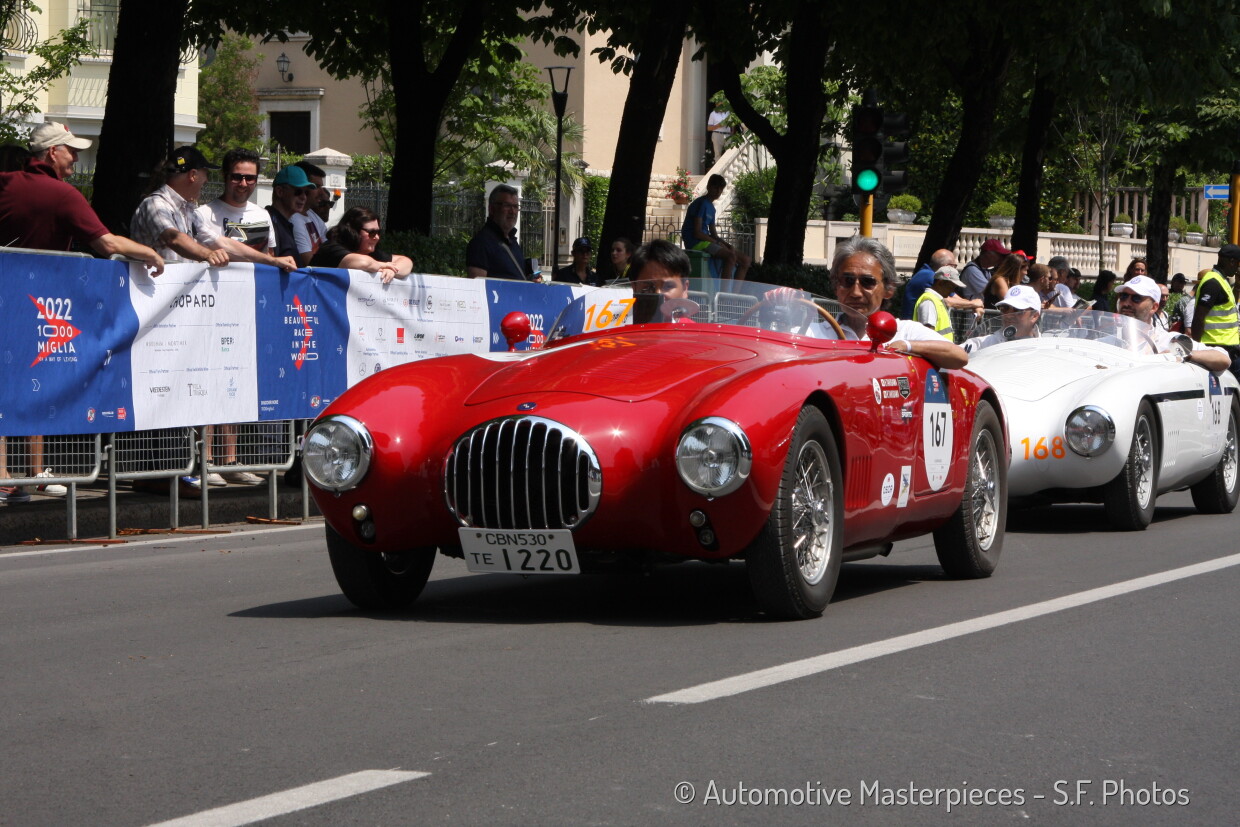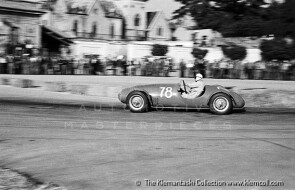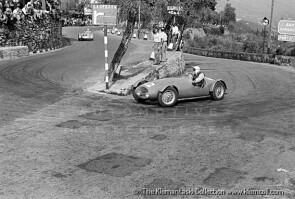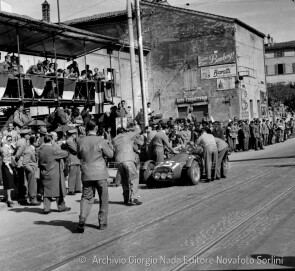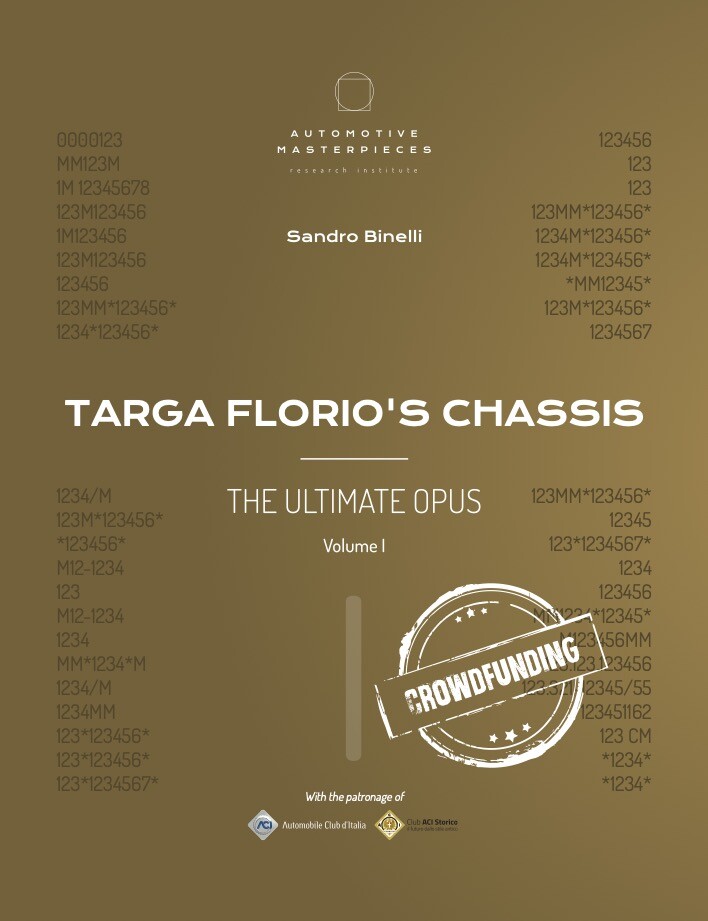
1949 O.S.C.A. MT4-2AD 1100
ON/OFF
Why am I an Automotive Masterpiece?
G. Team cars
Scuderia Monte Pellegrino (1956/1961), Scuderia Pegaso (1962)
H. Works cars
O.S.C.A (1949/1955)
L. Limited edition cars
no. 6 remaining
In 1937 the three surviving Maserati brothers, Ettore, Ernesto and Bindo, sold out to the Orsi Group in Modena to avoid bankruptcy. The assignment contract included a ten-year consultancy for the Maserati brothers. After that period, in 1947, they decided to come back to San Lazzaro di Savena, near Bologna and found the Officine Specializzate per la Costruzione Automobili Fratelli Maserati S.p.A. – O.S.C.A. for short – to build limited edition competition cars. The Maserati brothers were real racers, and their little O.S.C.A.s built, were real racing cars, the ultimate expressions of a long line of outstanding cars that bore their name, beginning in 1926. O.S.C.A.'s first automobile was the MT4, for Maserati Tipo 4 cilindri. Their goal was to develop an automobile to compete in the 1100 cc racing class. The choice of a small displacement was due to financial reasons: two years after World War II, Italy was still economically prostrate, moreover, there were no sponsors or big car manufacturers behind them to support the development of the car. There weren’t and won’t be teams of engineers or technicians in the years to come: Ernesto Maserati is solely responsible for conception and design. Over the next eight years the MT4 was developed into the most successful under-1500 cc sports/racing car in the world. The chassis followed the lines of their A6GCS Maserati (the last model they designed before leaving the Maserati factory): a tubular frame with independent double A-arms front suspension and a live axle on the back. The 1092 cc engine had an alloy headed FIAT-derived block and the bodywork was built as a two-seater barchetta. Tested by the same Ernesto, the car made its racing debut in September 1948 driven by Gigi Villoresi who, against racers and cars of the highest level brought the small O.S.C.A. to victory. A young Veronese, Giulio Cabianca, bought an OSCA 1100. He began a very long series of successes and, then, more and more drivers will be driving an Osca. The brothers continuously developed the engine and created (for the MT4-2AD) their own aluminum-block engine design with twin cams and cc started to grow, from 1342 cc, to 1453 cc and then, finally, to the twin-spark 1491 cc variant. O.S.C.A. fit seven different versions of their alloy Inline-4 engine into the MT4, and all fell below the 1.5 liter mark. Of the around 200 O.S.C.A. cars produced, perhaps 80 were MT4s, and of the MT4s, records show 40 barchettas with Morelli of Ferrara bodies. There were other interpretations, of course, like the coupes of Vignale or Frua. But the most interesting aspect is that many MT4 were updated in the body with the years, even by artisans, to be always competitive in the races in which they participated. The MT4 was OSCA's most prolific model, but the company also produced a variety of models in both single and two-seater configuration fitted with four, six, and even twelve-cylinder engines, from 750 cc to 4500 cc.
The 1949 O.S.C.A. MT4-2AD with chassis no. 1106 is an example bodied by the Fratelli Morelli with a “siluro” body and motorcycle fenders. It seems that the car was born with engine #1106 of the "MT4 1100" type, then modified in 1950 to "MT4-2AD 1100". It's the famous "O.S.C.A. of Cabianca”, the one that started the MT4-2AD myth and, with its series of successes, made the model one of the most desired by those who tried their hand at racing. Purchased in April 1949 by the young and promising Veronese driver Giulio Cabianca, chassis no. 1106 made its debut on May 8, 1949, at the Circuito Automobilistico di Reggio Emilia. The driver-car duo, for the first time on a circuit, was surprising and battled with drivers of the caliber of Bertone, Sighinolfi and Spreafico, but was forced to retire. The first success came on May 26th at the Circuito Automobilistico di Ferrara, ranking 1st in class. The list of races between 1949 and 1951 is very long and the O.S.C.A. - Cabianca duo is almost always on the podium or victorious in class. In at least three cases it was even 1st overall, in: 1950 Coppa Del Pasubio, Corsa sulle Torricelle, 1951 Giro Automobilistico delle Calabrie. It also took part in the XVIII Mille Miglia, finishing 12th OA / 3rd CL. Giulio Cabianca, top driver of the O.S.C.A. team, won with this car the Italian title in the 1100 cc category. In 1952 he was preparing to climb up to Formula 1 and handed over chassis no. 1106 to a gentleman driver, Baron Vincenzo "Enzo" Grimaldi, who moved the car's sporting career south, between Sicily and Calabria. Its sporting commitment was less intense than Cabianca's, but certainly successful: the car was always on the podium in class in the races it took part in from 1952 to 1955. Six years of racing (1949 – 1955) is a long time for a racing car but not for this car, still having a lot to give: it changes owners and drivers, but continues to race, almost unbeatable, until 1964. The car is purchased by Domenico Rotolo in 1955 and, between October 1955 and April 1956, the body was transformed (perhaps following a delayed update to the 1953 regulations for sports cars, or following an accident) from siluro to barchetta, with integrated fenders and the classic MT4-2AD round front grille. It is said that Rotolo had a conflicting relationship with his car: given his considerable height, he could barely fit into the cockpit and had difficulty with the large steering wheel. A friend who followed him in races remembered that once, leaving the cockpit, he said in Sicilian dialect: "Ogni vota m’arricampu a casa cu l’ossa rutti"! (I return home every time with broken bones"). In 1955, chassis no. 1106 faced its first Targa Florio, ranking 1st in class. It took part in a total of seven editions of the Targa Florio from 1955 to 1964, placing 17th OA / 3rd CL in 1956 and 11th OA / 2nd CL in 1959. Once its racing career was over, it wasn't long before the car was spotted by one of the pioneers of Italian car collecting, the late Giulio Dubbini. Other passionate collectors followed and, already in 1984, the car participated to its first re-enactment of the Mille Miglia, followed by several others after mid 2010’s. It was increasingly featured in sector publications and books, such as Mille Miglia’s Chassis Volume III, and will be in the forthcoming Targa Florio’s Chassis, both published by Automotive Masterpieces. Chassis no. 1106 is completely restored in its final bodywork with integrated fenders and is still matching numbers.
